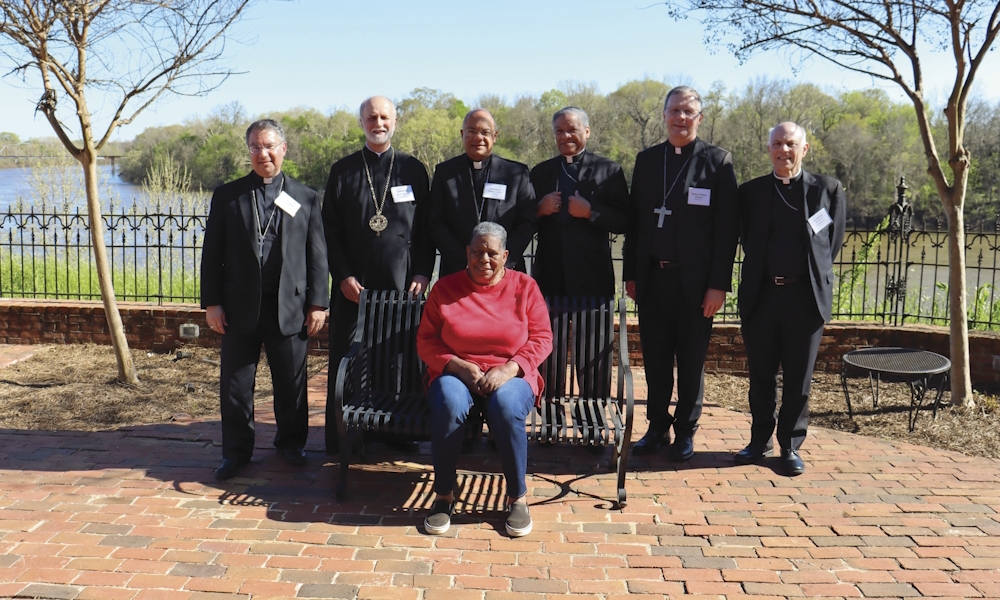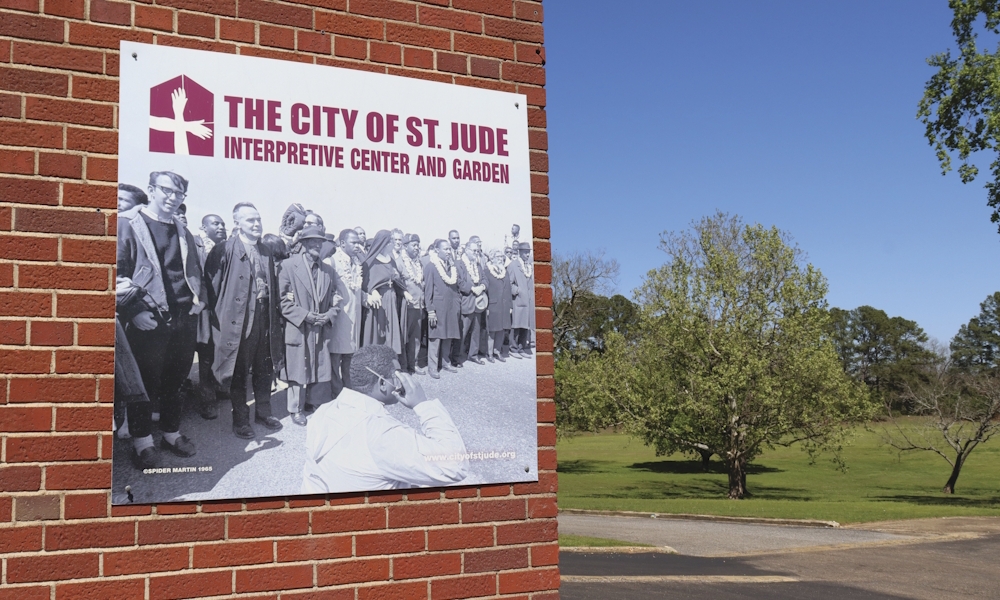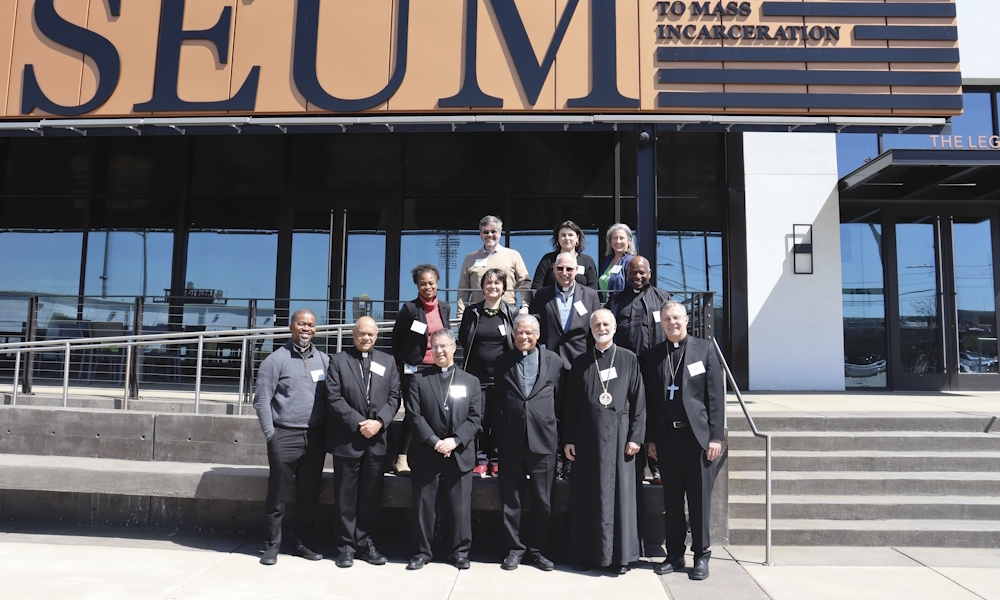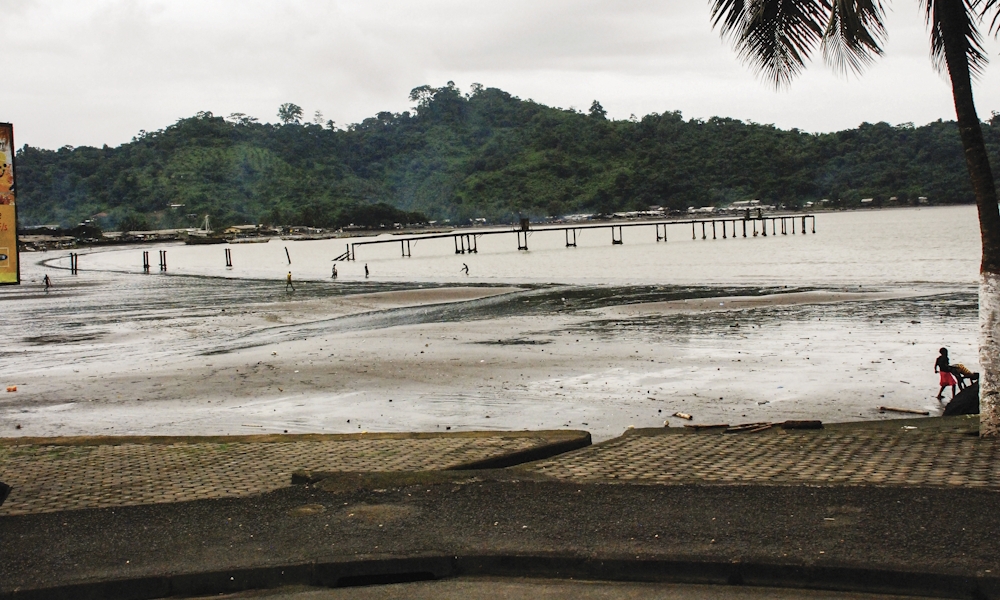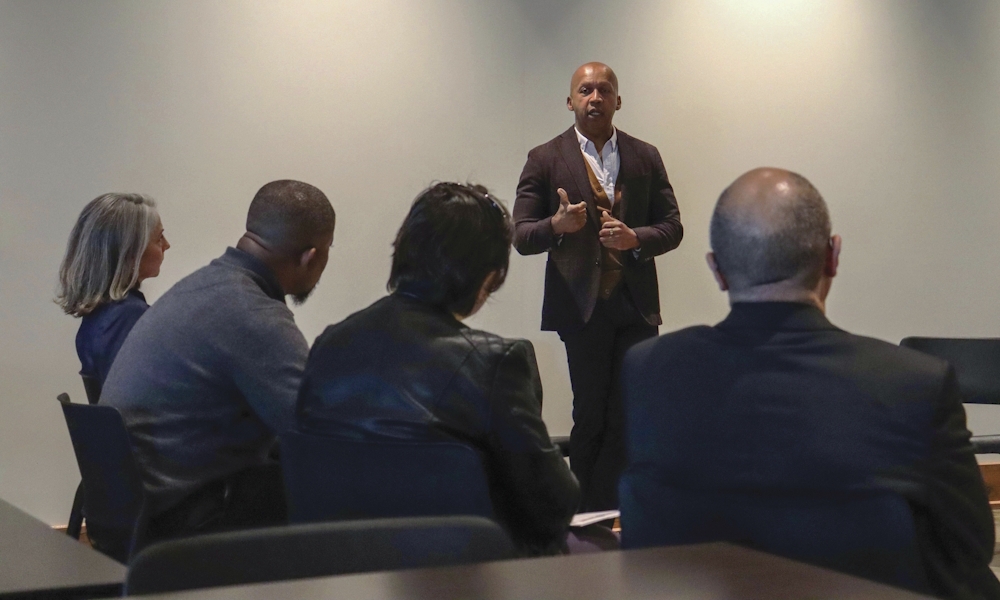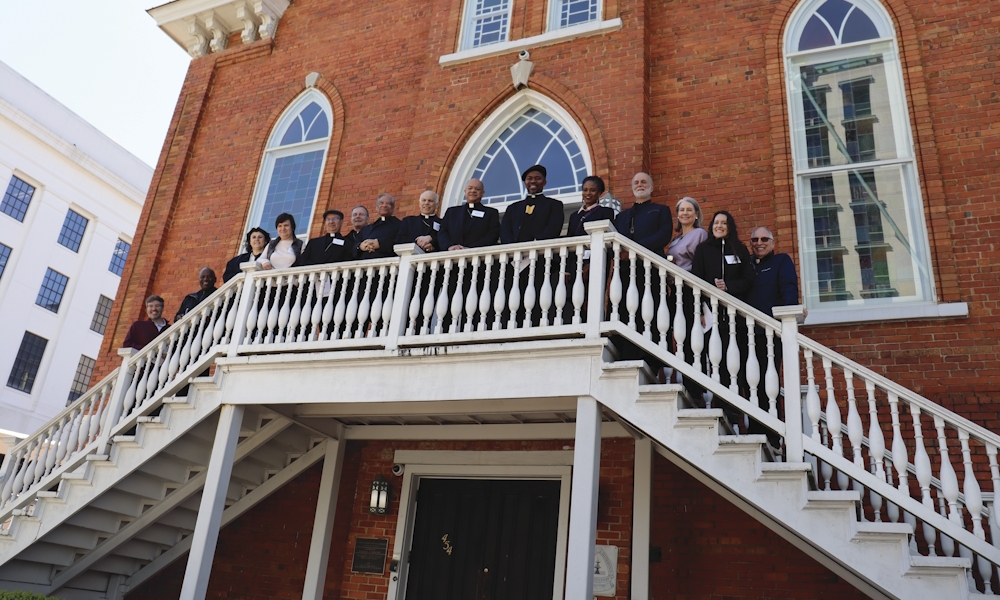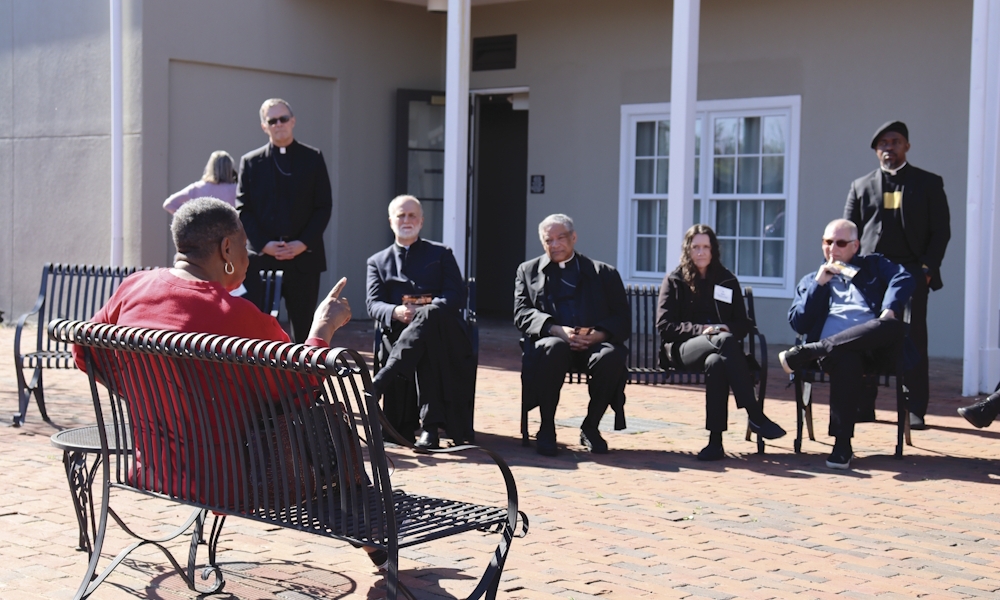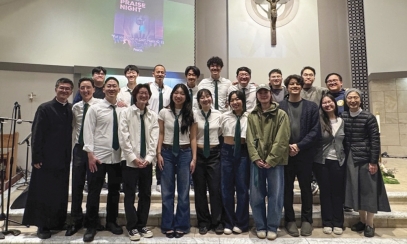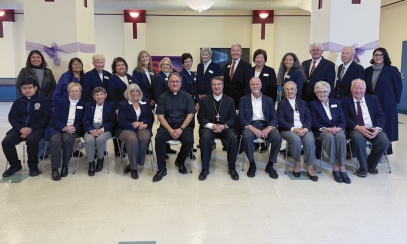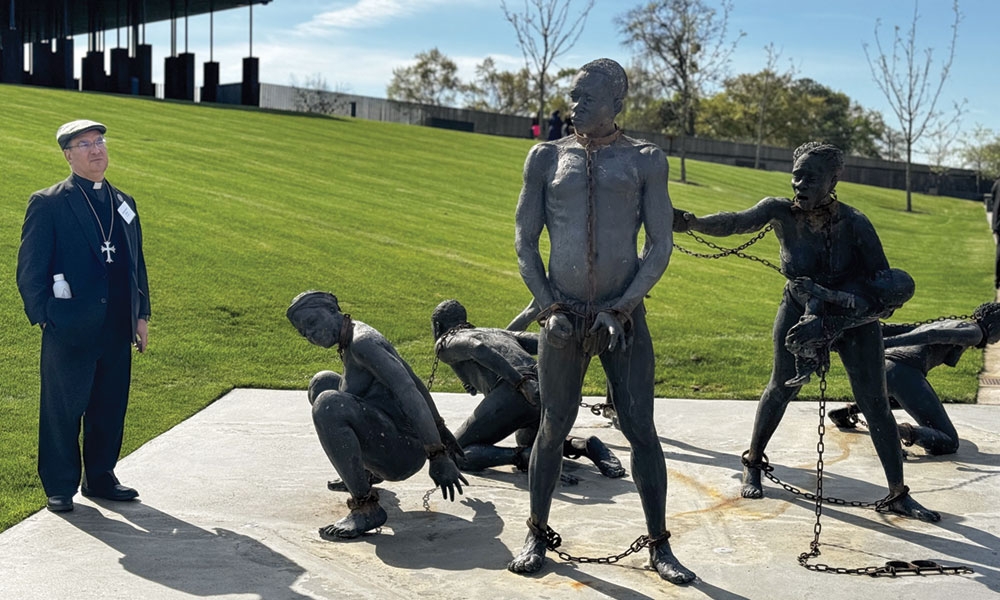
A Lenten Reflection on a Love that Confronts Hatred
Of Slavery and its Aftermath
Of Slavery and its Aftermath
During Holy Week of 2024, several bishops from across the nation, including Bishop Oscar Cantú, traveled down to Montgomery, Alabama, for 3 days and 2 nights for a Lenten experience that was organized by the United States Conference of Catholic Bishops (USCCB) and Catholic Mobilizing Network to delve deeper into and understand better the reality of slavery and its aftermath in the history of our nation. Father Angelbert also attended.
During Holy Week of 2024, several bishops from across the nation, including Bishop Oscar Cantú, traveled down to Montgomery, Alabama, for 3 days and 2 nights for a Lenten experience that was organized by the United States Conference of Catholic Bishops (USCCB) and Catholic Mobilizing Network to delve deeper into and understand better the reality of slavery and its aftermath in the history of our nation. Father Angelbert also attended.
In Cameroon, where I grew up, on the Atlantic Ocean, at Down Beach, Limbe, a structure juts out from the shore. To me, it always looked like an abandoned bridge. I always wondered what was on the other end of this old, rusted, and broken “bridge.”
From an inquisitive 8-year-old boy at the beach, it would take another decade and a half for me to understand that the pieces of that structure were remains of a platform where my ancestors were kept above water — most of whom could not swim since they lived inland — awaiting the slavers’ ships. Then, last year, during Lent of 2024, as I stood in front of the Legacy Museum in Montgomery, Alabama, I realized that I was now standing at the other end of that bridge.
Pilgrimage to Montgomery and Selma
This pilgrimage, as many participants would call it in their personal reflections, was a sober time of reflection and sharing. The bishops and some priests and laity who accompanied them opened their hearts and minds to engage in this deeply disturbing history of the United States, whose aftermath continues to bedevil and hurt our society.
We visited the Legacy Museum, where we journeyed through the narrative of slavery, segregation, civil rights, and mass incarceration. We then visited the National Memorial for Peace and Justice, which is a monument to victims of lynching. In a profound conversation with Bryan Stevenson, the founder and executive director of the Equal Justice Initiative, he highlighted how the false narrative that black people were inhuman once fueled the belief that slavery was acceptable. He linked this to today’s societal “ascribed dangerousness,” where those of color are perceived more as threats than as dignified persons, which has brought about a disproportionate number of incarcerated people of color.
From there, we traveled to Selma, where we had a heartfelt listen to JoAnne Bland, a lifelong Civil Rights activist. Having grown up in the Jim Crow South, she participated in the Selma to Montgomery marches in 1965. Along our journey to Selma, we stopped at St. Jude, the Catholic Church and town where the Civil Rights marchers camped before the last stretch of their 54-mile march to Montgomery. Participants in the Lenten experience, alongside some of the locals, prayed the Stations of the Cross together.
The Golden Calf of Hatred
On the last day of this profound and sacred experience, we visited the National Memorial for Peace and Justice. Everyone had a quiet time of personal reflection, after which we gathered for the final Mass at St. Peter’s Church in Montgomery, presided over by Bishop Oscar Cantú. The Mass readings came from the book of Daniel, where we read of the resilience of Shadrach, Meshach, and Abednego, who were righteously defiant and ready to pay the ultimate price for refusing to worship the golden statue.
Their words to King Nebuchadnezzar resonated with me. "Know, Your Majesty, that we will not serve your gods or worship the image of gold you have set up" (Dn 3:16-18 NABRE). In his homily, Bishop Cantú posed the question: “What is that golden statue today?” He noted that we now deal with “…a golden statue that shines of hatred…” and he invited us to learn from the Civil Rights Activists who peacefully kneeled and prayed during the march from Selma. In the face of brutal violence, their actions can be defined as love.
Once, I played under one end of an old, rusted, and broken “bridge” in Cameroon. Today, as a priest, I minister on its other side, at the other end of the journey of my ancestors who were forcibly brought here as enslaved people. Our generation must build a new bridge that does not terminate in subjugation, dehumanization, or hatred. It must be one of love. The only acceptable activism of today is to hold up a mirror of love to hatred; it is the building block of a new bridge. In the face of conscious and unconscious race-based bitterness in our present-day society and the scars from the unhealed welt of slavery in the nation, I am left to reflect on this: the time for rebuilding is now.
Father Angelbert Chikere is the Director of the Office of Life, Justice & Peace for the Diocese of San José. He is currently studying for a doctorate in Social Science, concentrating on Human Dignity and Catholic Social Teaching. He enjoys encountering people and sharing life experiences.

